Abstract
When HeLa cells are fixed with ethanol, extracted with 0.1 N HCl, and incinerated at 540°C, all organic constituents and all ions studied are removed with the exception of iron. The gross outlines of cell structures are preserved and high concentrations of residual ash in interphase nucleoli and mitotic chromosomes suggest that there may be a shift in iron salts during the cell cycle. Experiments with cells isotopically labeled in proteins, nucleic acids, lipids, and polysaccharides indicate that the iron is bound to a polysaccharide. Addition of iron chelating agents to living cells causes a selective inhibition of DNA synthesis. These data suggest that iron may play a crucial role in the mitotic process.
Full text
PDF
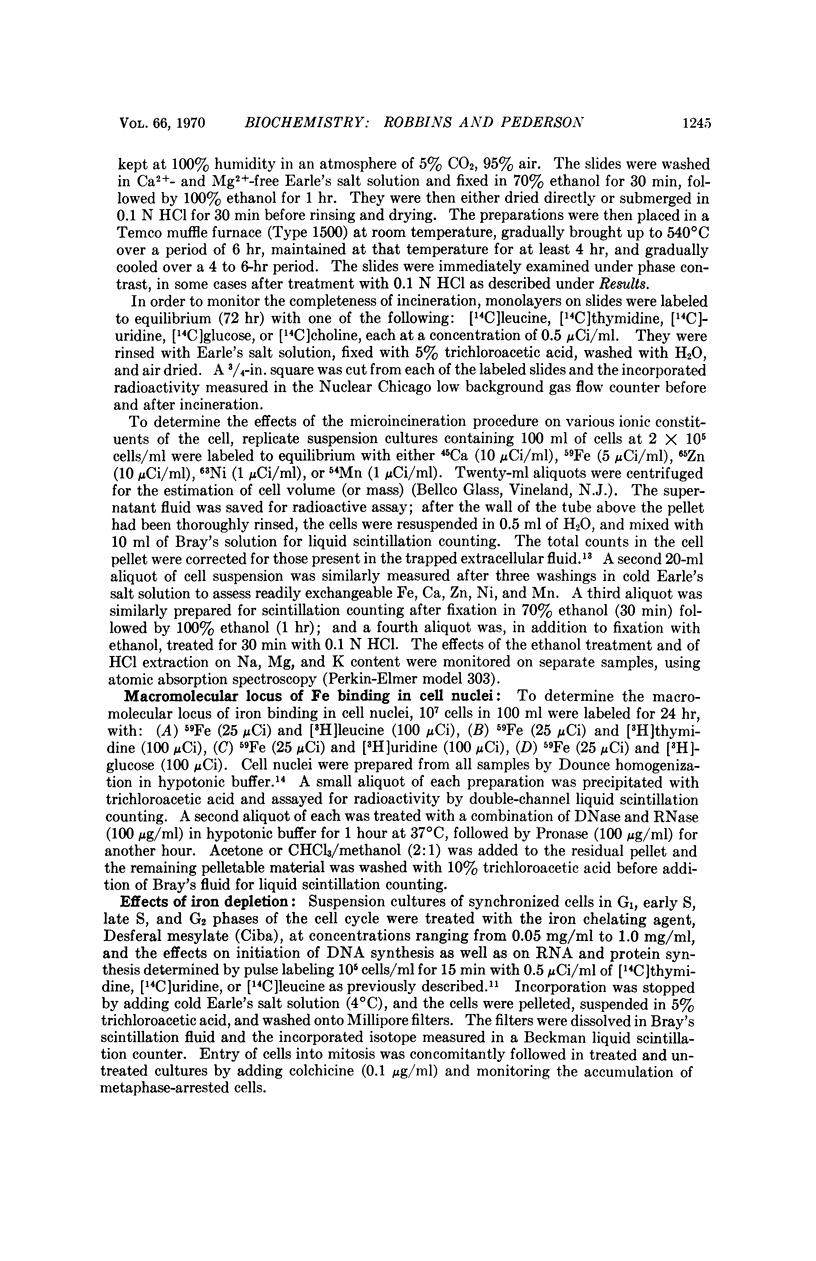
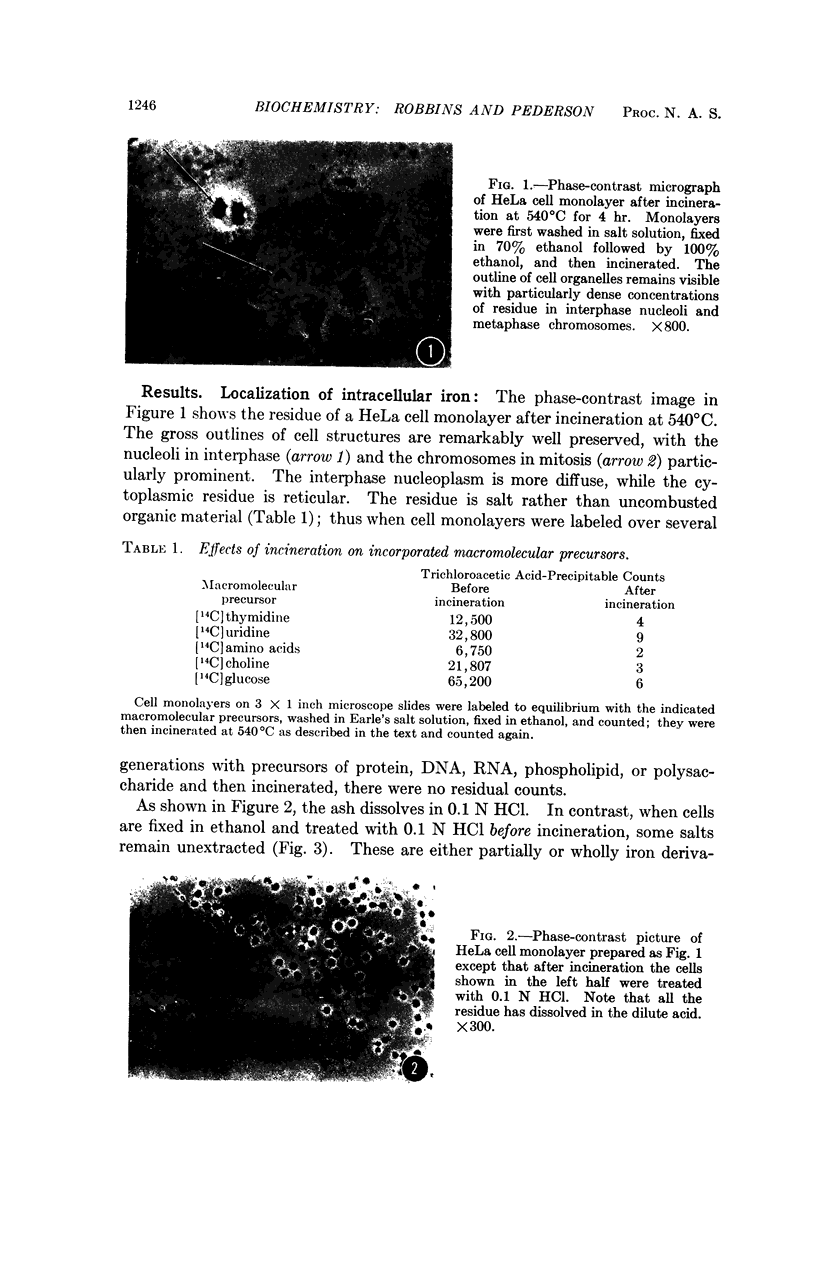
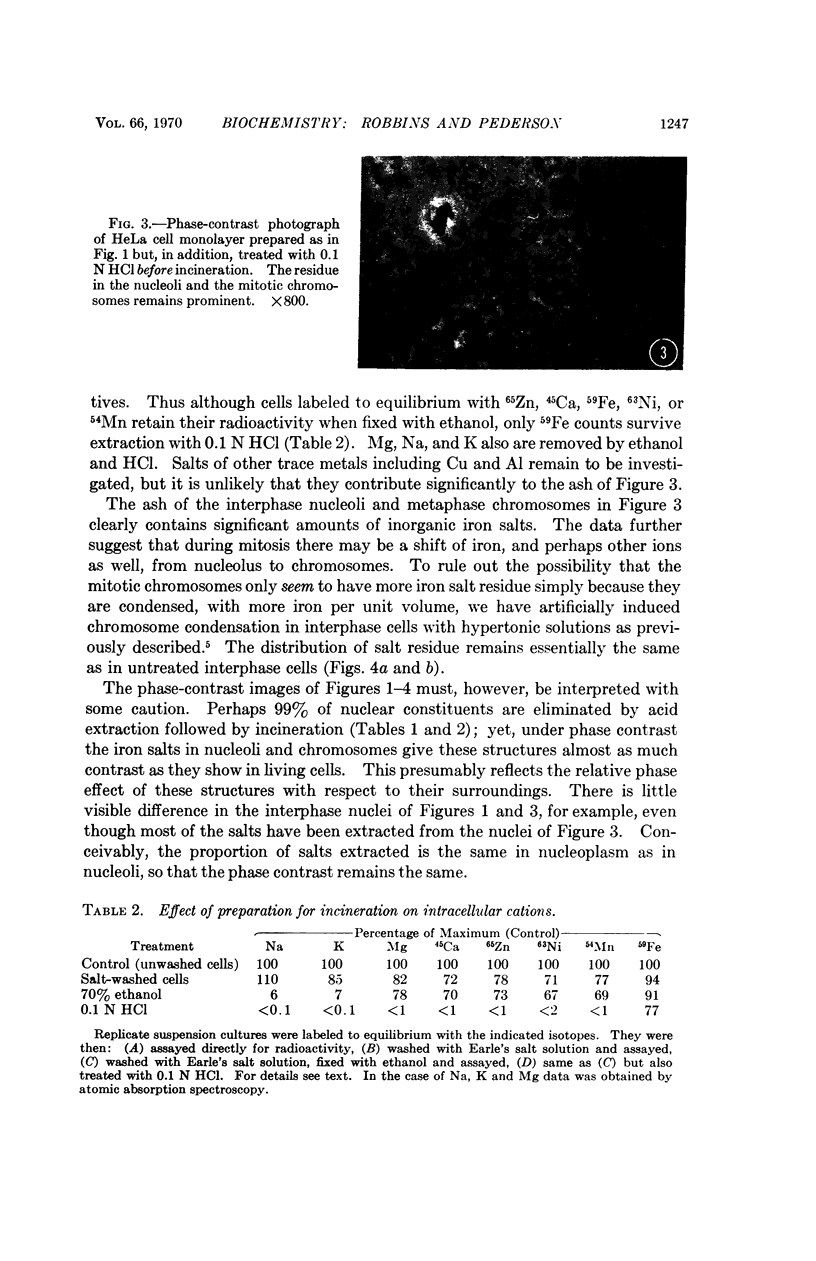
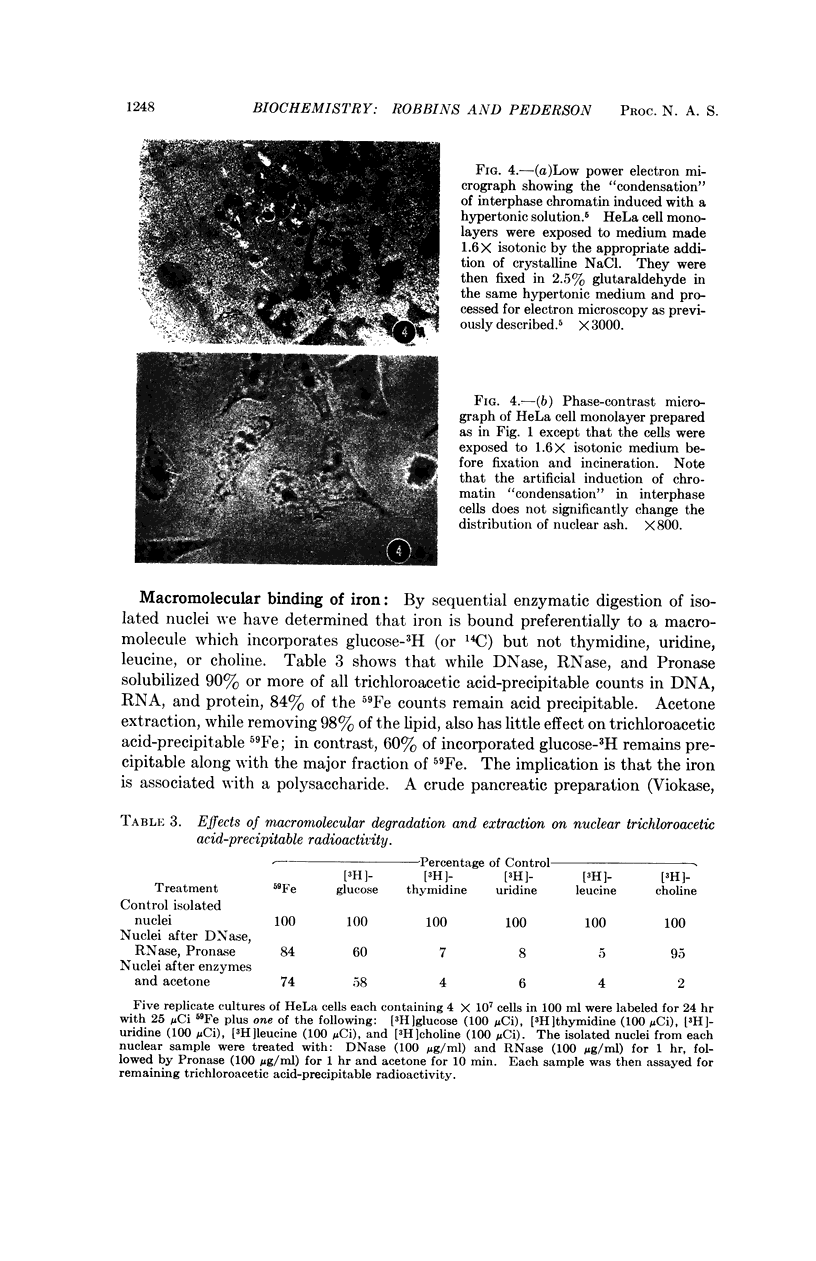
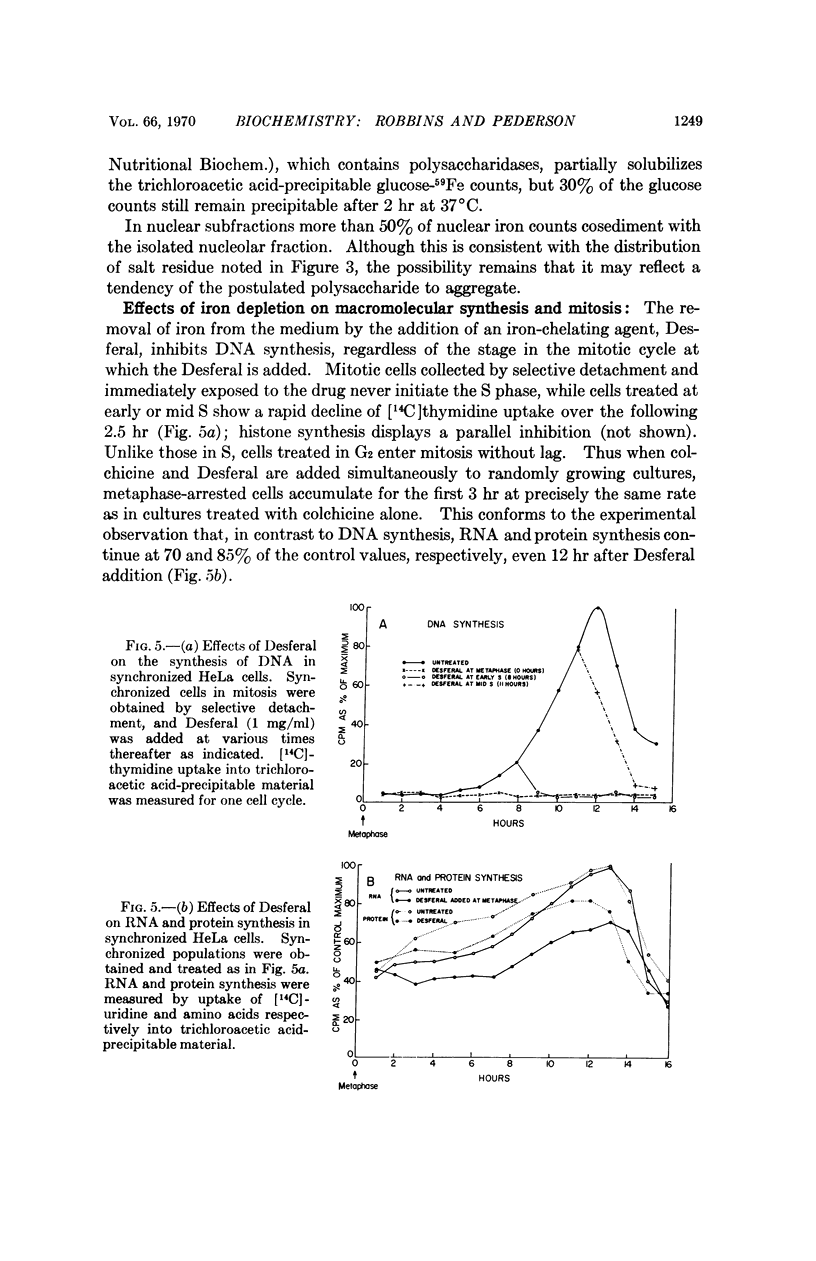
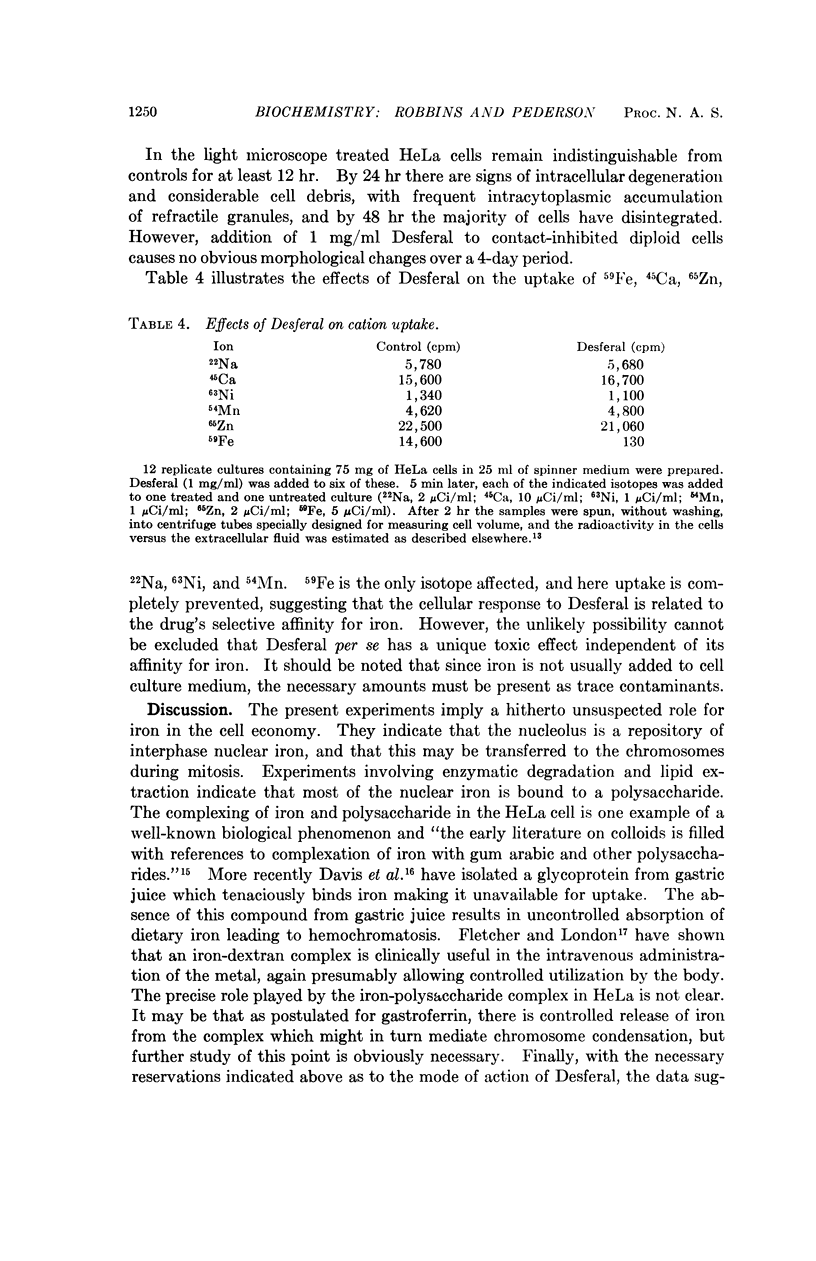
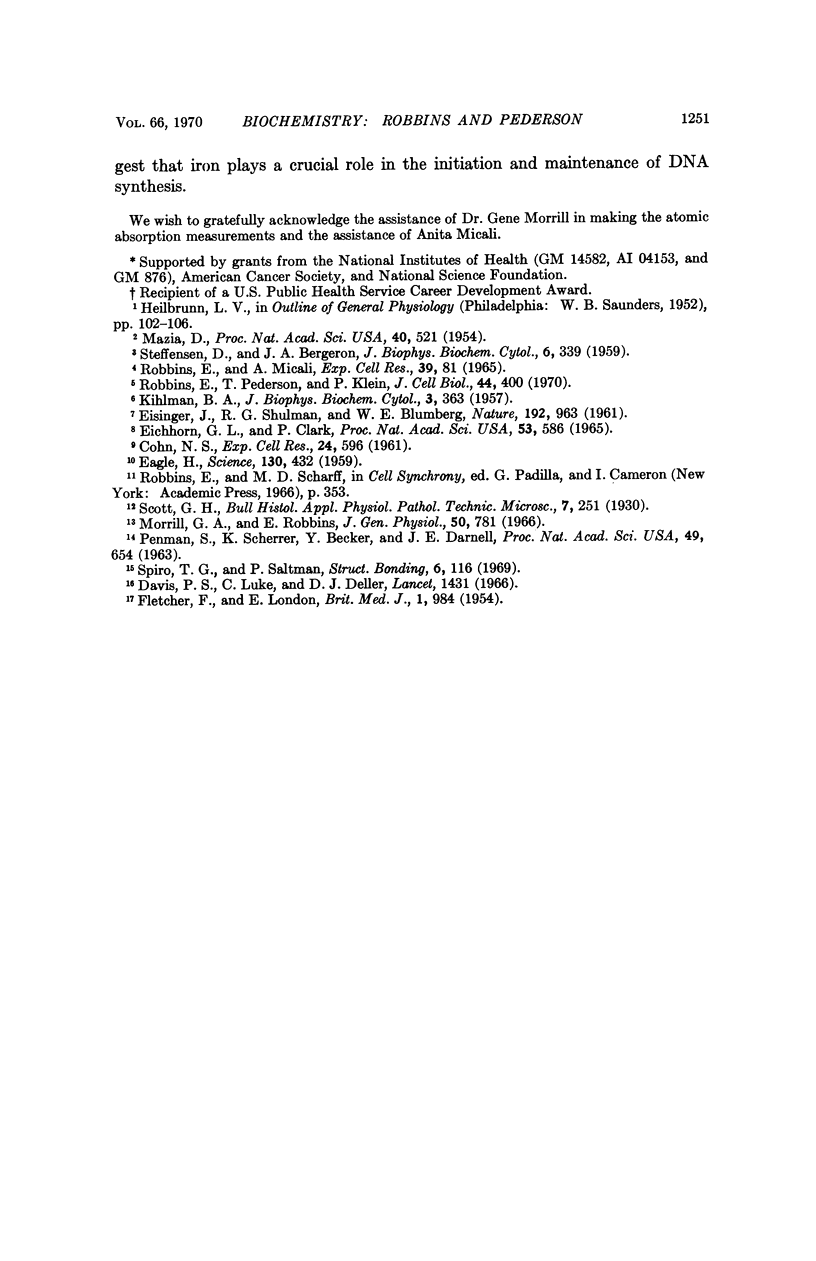
Images in this article
Selected References
These references are in PubMed. This may not be the complete list of references from this article.
- COHN N. S. The effect of chelation on the production of chromatid aberrations in Vicia faba. Studies with radiomimetic agents. Exp Cell Res. 1961 Sep;24:596–599. doi: 10.1016/0014-4827(61)90462-1. [DOI] [PubMed] [Google Scholar]
- EAGLE H. Amino acid metabolism in mammalian cell cultures. Science. 1959 Aug 21;130(3373):432–437. doi: 10.1126/science.130.3373.432. [DOI] [PubMed] [Google Scholar]
- EICHHORN G. L., CLARK P. INTERACTIONS OF METAL IONS WITH POLYNUCLEOTIDES AND RELATED COMPOUNDS. V. THE UNWINDING AND REWINDING OF DNA STRANDS UNDER THE INFLUENCE OF COPPER (II) IONS. Proc Natl Acad Sci U S A. 1965 Mar;53:586–593. doi: 10.1073/pnas.53.3.586. [DOI] [PMC free article] [PubMed] [Google Scholar]
- EISINGER J., SHULMAN R. G., BLUMBERG W. E. Relaxation enhancement by paramagnetic ion binding in deoxyribonucleic acid solutions. Nature. 1961 Dec 9;192:963–964. doi: 10.1038/192963a0. [DOI] [PubMed] [Google Scholar]
- KIHLMAN B. A. Experimentally induced chromosome aberrations in plants. I. The production of chromosome aberrations by cyanide and other heavy metal complexing agents. J Biophys Biochem Cytol. 1957 May 25;3(3):363–380. doi: 10.1083/jcb.3.3.363. [DOI] [PMC free article] [PubMed] [Google Scholar]
- Mazia D. THE PARTICULATE ORGANIZATION OF THE CHROMOSOME. Proc Natl Acad Sci U S A. 1954 Jun;40(6):521–527. doi: 10.1073/pnas.40.6.521. [DOI] [PMC free article] [PubMed] [Google Scholar]
- Morrill G. A., Robbins E. The role of calcium in the regulation of the steady-state levels of sodium and potassium in the HeLa cell. J Gen Physiol. 1967 Mar;50(4):781–792. doi: 10.1085/jgp.50.4.781. [DOI] [PMC free article] [PubMed] [Google Scholar]
- Penman S., Scherrer K., Becker Y., Darnell J. E. POLYRIBOSOMES IN NORMAL AND POLIOVIRUS-INFECTED HELA CELLS AND THEIR RELATIONSHIP TO MESSENGER-RNA. Proc Natl Acad Sci U S A. 1963 May;49(5):654–662. doi: 10.1073/pnas.49.5.654. [DOI] [PMC free article] [PubMed] [Google Scholar]
- Robbins E., Micali A. The use of osmotic shock in the study of the mammalian HeLa cell surface changes during mitosis with special reference to calcium-containing solutions. Exp Cell Res. 1965 Aug;39(1):81–96. doi: 10.1016/0014-4827(65)90010-8. [DOI] [PubMed] [Google Scholar]
- Robbins E., Pederson T., Klein P. Comparison of mitotic phenomena and effects induced by hypertonic solutions in HeLa cells. J Cell Biol. 1970 Feb;44(2):400–416. doi: 10.1083/jcb.44.2.400. [DOI] [PMC free article] [PubMed] [Google Scholar]
- STEFFENSEN D., BERGERON J. A. Autoradiographs of pollen tube nuclei with calcium-45. J Biophys Biochem Cytol. 1959 Dec;6:339–342. doi: 10.1083/jcb.6.3.339. [DOI] [PMC free article] [PubMed] [Google Scholar]







